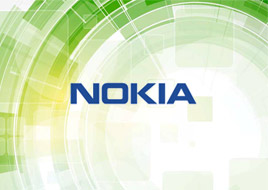Rakesh Kushwaha is the head of the IoT Product Unit within Nokia’s Applications and Analytics business group. Here he tells George Malim how he sees the connected cars ecosystem developing as the market moves on from retrofitting point solutions to traditional vehicles using long-established technologies to one where many services utilise the same, flexible platform to federate connected car data into the business process of organisations that extend far beyond the parameters of a traditional vehicle.
IoT Now: Connected cars are at the forefront of IoT deployments, why do you think IoT is so popular in this sector?
Rakesh Kushwaha: Cars generate a lot of data and, while we’ve known that for many years, now that they’re connected there’s a means to pull down the raw data and send it somewhere. That in itself is only the first step, what’s useful and attractive are the insights that come out of the data once it has been pulled out of the car and sent somewhere.
The market is taking off rapidly because there are now a lot of companies that are able to generate useful insights now that the technology enabler of data collection connectivity is here. We see huge opportunities that are already realities in areas such as fleet management, predictive maintenance and usage-based insurance (UBI). There are a lot of common applications from providers in these areas because the business case is so strong. If you take UBI, for example, the amount insurers can save with the data they gather and the means they have for monetising this from the consumer, makes the connected car business case compelling.

IoT Now: Which organisations do you see as the leaders in terms of fitting connected car technology to vehicles?
RK: There are too many participants in this market to list. All sorts of organisations can install connected car technology into vehicles and this extends from individual service providers through to car makers themselves. What seems to be the most common interface is the on-board diagnostics (OBD) port which can create a small number of data sources. The problem this presents is that it’s not like a cigarette lighter in a car – you don’t want it to have multiple devices plugged in at once. If you did, in my car for certain, there’d be nowhere to put your left foot.
This means service providers will soon face limitations because, if you’re already using the OBD port for UBI, you can’t use it to support an app such as a mobile operator’s offering that is used for tracking your children and setting up parameters so they don’t stray too far from a given area while they’re using the car. They are going to need a splitter for that or the customer will have to choose which app they want to use.
This needs to be addressed and auto OEMs need to find a way to enable these multiple business models to exist. In addition, they can choose to expose much more data than that done via the OBD port – a specification of which goes back to 1995. I’d like to see more data made available to connected car apps and the OBD port is probably not the most convenient way of doing this. Therefore I can see an alternative means for third parties to plug into the vehicle and extract data coming to the market soon.
IoT Now: What do you see as Nokia’s role in the connected cars market?
RK: From the perspective of our entire portfolio we have a broad range of products to help the connected car and vehicle-to-x (V2X) use cases. Obviously, our heritage is as a communications enabler and our 5G Auto Alliance participation is certainly innovating and working on new solutions for the V2X market. However, communications is only the enabler of connected cars, the value comes from the apps that are enabled and this brings me to Nokia’s Applications and Analytics business group.
There’s a clear opportunity for Nokia’s IMPACT product to help address the problems of connected car communications. For instance, I’ve had to take my new car to the dealer multiple times for software updates – first it was to install CarPlay, then it was to fix an airbag error, then the navigation map content and even more recently a software recall on the sunroof. These are real problems that should be trivial to address via an over-the-air software upgrade but they’re causing customer inconvenience and causing high costs for dealers and ultimately the auto OEM.
Our IMPACT product addresses this and in the future can be used to support applications such as high definition mapping that enable the vehicle to know, for example, that there’s a pothole ahead. Once we’re positioned to handle firmware over the air and software over the air upgrades, we’re positioned to handle UBI, fleet management and fuel efficiency monitoring.
Why not have one OBD dongle for everything? Service providers don’t want to own the OBD port, they just want access to the data so I see no reason why Nokia IMPACT can’t be the broker for that.
IoT Now: Please can you tell us more about Nokia IMPACT and what it offers?
RK: IMPACT is made up of several different layers across cloud, device management, data collection, application enablement and security end-to-end – all regardless of the thing you’re managing.
The components can scale to meet demand very rapidly so you can manage software securely and economically. IMPACT can take inputs from old protocols such as CAN in the vehicle and make data available through the cloud and make federations to all those who need it and who pay for the data.
We believe IMPACT can be the middleground between the vehicle systems and technologies and meeting the data requirements of the individual connected car applications.
IoT Now: Security is increasingly coming into this discussion. The connected car is an environment with obvious security risks and a high level of user concern. How have you built security in to the IMPACT offering?
RK: Security is a key part of any connected car application. It is paramount and the way we’ve implemented our security is a differentiator. First, we use industry best practices such as two-way authentication, signed software delivery from a trusted source; certificates and encryption. Secondly, we analyse the traffic at the device and in the network for anomalies such as malware or intrusion. Then lastly we have the capability to reflash firmware autonomously so all the user gets is a message to say that a problem has been found and fixed.
IoT Now: There seem to be lots of individual connected car applications but have you seen any examples that demonstrate the full extent of the connected car ecosystem?
RK: One example is a concept car we collaborated on with members from our IoT community ecosystem. People assume that the next wave of innovation will be autonomous driving capability but the great thing about this project is we’re thinking beyond even that. We’re assuming all of the autonomous driving functions happen and users may end up not owning the car but using it as and when they need it.
We are likely to see the majority of drivers using cars that aren’t their own so the challenge to service providers becomes one of making the car feel like their own. In our concept, we demonstrated adjusting the vehicle to personal preferences automatically including features such as installing the drivers’ favorite music or news app on the car, putting the seat in their chosen position, positioning the mirrors and seamlessly configuring the car to make and receive calls without a cumbersome Bluetooth pairing (and de-pairing) process.
If you think about it – Nokia’s IMPACT platform has been managing smartphones for years. When a phone turns on for the first time, it’s settings get pushed to the phone, apps can be installed overthe-air, contacts can be pushed and the phone is ready for use. As cars become software platforms; it’s a natural fit for us to be able to configure settings in the vehicle, install software to the vehicle, manage its connectivity and many other functions.
Because our software is inside the vehicle, we would have the capability to expose more data than just what can be read from the OBD port. The data can be used to service the multitude of applications mentioned above – UBI, fleet management, family tracking, preventative maintenance and others.
IoT Now: What do you see as the next steps for increasing the maturity of the connected cars sector?
RK: Many connected car services are now reality but there are a wide range of auxiliary services that need to be considered. Much of the technical challenges are being addressed and the new options that are coming to market for connectivity add a further dimension to the flexibility and choices available in this market. For instance, while 5G cellular communications remain many years away, IoT-specific technologies such as narrowband-IoT and low power wide area (LPWA) connections are coming to market. Designed for IoT, these bearers are highly suitable for some of the low bandwidth, regular communications a vehicle makes with an OEM or a fleet manager.
Aside from the connectivity, apps and services that are continually being developed, there is still work to do on standardisation and enabling integration between the network, the apps and the vehicle. Ongoing utilisation of the OBD port requires a smoother, more efficient means of enabling multiple applications to interact with the vehicle’s systems simultaneously. The OBD port was never designed as a data extraction point for applications other than dealer and OEM use. It was also never designed with the intention of supporting multiple applications. For it to continue to be used and deliver the functionality that apps require it is necessary for systems that enable the OBD to be orchestrated and secured to come to market.
Nokia’s IMPACT can provide this functionality and really support the OBD port as the critical extraction point for data from the car. With these capabilities, data can be simply federated to all stakeholders across the connected car value chain, with appropriate payment for the value provided being collected from each as part of the process.
Finally, it’s important to take into account that the connected car is part of a wider ecosystem and connected car data and services are inextricably linked with smart cities and smart transportation platforms as well as other more vertical segments. Most organisations across this value chain don’t want only a connected car platform, they want connected cars to integrate smoothly into a wider IoT platform and to have the capability to play their role in the enlarged digital services value chain, of which cars are just one aspect.
 We see the fragmentation that currently exists in the market as different device and software platforms are utilised starting to disappear as approaches coalesce and become more unified. This in turn will bring the costs of deploying systems such as fleet management down and the great news for all is that as the cost comes down the ubiquity goes up.
We see the fragmentation that currently exists in the market as different device and software platforms are utilised starting to disappear as approaches coalesce and become more unified. This in turn will bring the costs of deploying systems such as fleet management down and the great news for all is that as the cost comes down the ubiquity goes up.
To learn more: Read Nokia’s ‘Driving a Digital Endpoint’ white paper.










